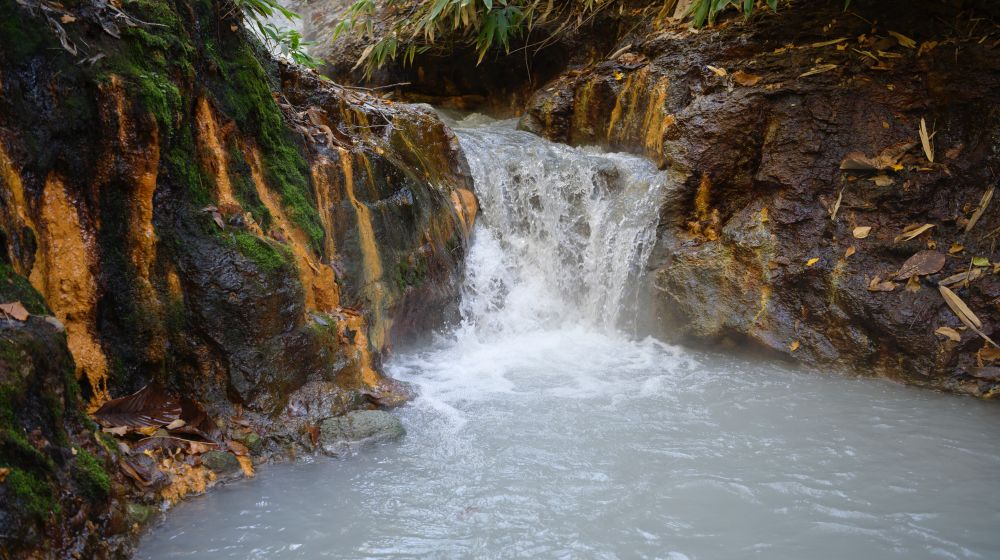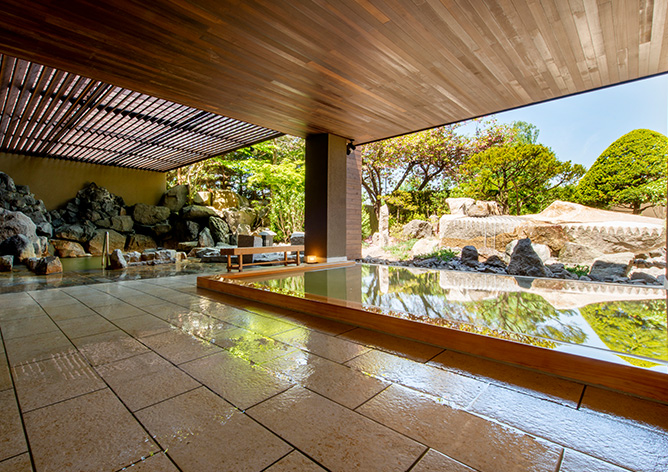
Toyako Manseikaku Hotel Lakeside Terrace
Other Onsens in Hokkaido
Hokkaido
This is the extraordinary beyond the everyday


Located in Noboribetsu City, facing the Pacific Ocean in the southwestern part of Hokkaido, it is one of the most popular hot spring resorts in Japan.
It is easily accessible from Sapporo, Hakodate, and the airport, so in addition to the location that is easily accessible from other areas,
The reason for its popularity is the abundant amount and quality of the hot water, as well as the variety of leisure facilities in the surrounding area.
The natural spring flow is 10,000 tons per day, the temperature is 40 to 90 degrees Celsius, and the quality of the spring is varied, and there are 9 types. This is rare in the world and has earned the nickname "department store of hot springs".
In Jigokudani and Mt. Hiwa, where the spring source is located, there is a promenade so that you can see the springs and vents that have formed on the surface of the earth due to volcanic activity from about 10,000 years ago, and you can get up close while taking a walk.
Hot water vapor and volcanic gases erupt violently, and the cloudy water gushes out, as if you were experiencing the pulse of the living earth.
The surrounding area is blessed with abundant nature, so you can stretch your legs a little and enjoy nature walks, hiking, and mountain climbing. In addition, Noboribetsu City faces the Pacific Ocean, so it is close to the fishing port and blessed with seafood.
In addition, there are also theme parks such as "Bear Farm", and it is a major hot spring tourist destination that you can enjoy while touring 9 types of hot springs.

Noboribetsu Onsen is located about 10 minutes inland from the city center of Noboribetsu City.
Jigokudani, which is the source of the hot spring resort, is located in "Shikotsu-Toya National Park" (some hot spring resorts are also included), and one of the attractions is that you can feel the magnificent nature of Hokkaido firsthand.
In this park, you can also get a glimpse of various phenomena and topography caused by volcanoes, such as the two major calderas of Lake Shikotsu and Lake Toya, Mt. Usu and Mt. Tarumae, which are still active, the beautiful Mt. Yotei, which is also known as Ezo Fuji, and Noboribetsu Jigokudani where you can see the earth's underground activities on the surface.
Since it was close to the port and the mainland of Japan, it has been popular as a Onsen resort since the Edo period. Therefore, it is also maintained as a Onsen town, and you can enjoy a tour of the hot springs that there are 9 types.
Highlights such as Noboribetsu Jigokudani, Oyunuma, Okunoyu, and Tetsusen Pond are all within walking distance of the hot spring town. Of course, there is also a parking lot, so you can move around by car.
There are also plenty of day-trip hot springs, so you can stop by for hiking, climbing, activities, and returning to the theme park.
In addition, about 8 kilometers from Noboribetsu Onsen, there is Noboribetsu Karurus Hot Spring, which has also been popular as a medicinal hot spring for a long time. This place, which can be said to be a more secluded and secret hot spring, is also popular
Including Karurus, it seems that it is sometimes called Noboribetsu Onsen Town. The course of visiting these two places is also popular.
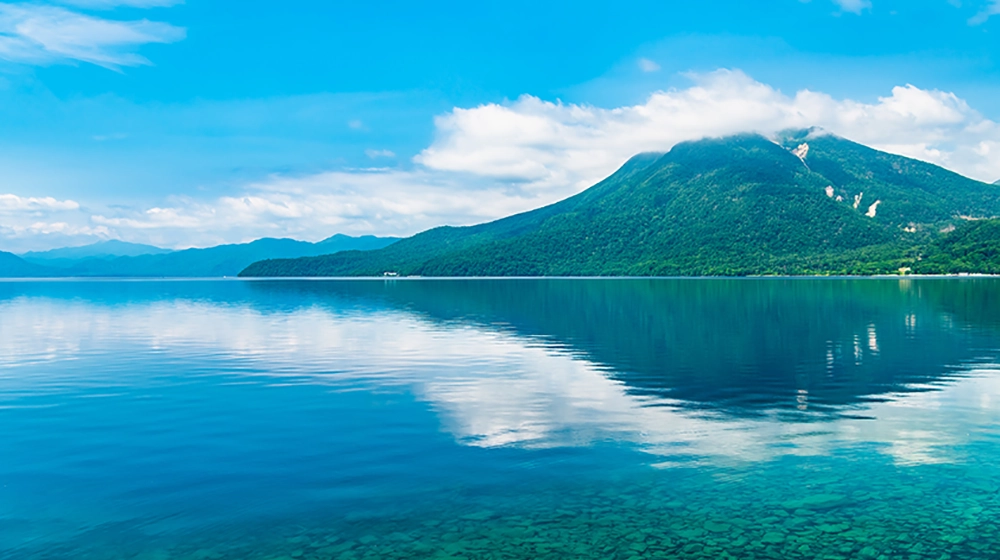
<From Tokyo1>
Haneda Airport → New Chitose Airport (about 1 hour 40 minutes)
New Chitose Airport< Donan Bus Expressway Hayabusa>→ Noboribetsu Onsen (about 1 hour 10 minutes)
<From Tokyo2>
Haneda Airport → Hakodate Airport (about 1 hour 20 minutes)
Hakodate Airport < JR Hokkaido >→ Hakodate Station< JR Hokkaido Limited Express Hokuto >→ Noboribetsu Station< Donan Bus>→ Noboribetsu Onsen (about 4 hours)
<From Osaka1>
Kansai Airport→ New Chitose Airport (about 2 hours)
New Chitose Airport< Donan Bus Expressway Hayabusa>→ Noboribetsu Onsen (about 1 hour 10 minutes)
<From Osaka2>
Kansai Airport→ Hakodate (about 1 hour 40 minutes)
Hakodate Airport < JR Hokkaido >→ Hakodate Station< JR Hokkaido Limited Express Hokuto >→ Noboribetsu Station< Donan Bus>→ Noboribetsu Onsen (about 4 hours)
<From Hakata>
Fukuoka Airport→ New Chitose Airport (about 2 hours 30 minutes)
New Chitose Airport< Donan Bus Expressway Hayabusa>→ Noboribetsu Onsen (about 1 hour 10 minutes)
<From Tokyo>
Tokyo → Hakodate<Tohoku Shinkansen>(About 4 hours 30 minutes)
Hakodate Station< JR Hokkaido Limited Express Hokuto >→ Noboribetsu Station< Donan Bus>→ Noboribetsu Onsen (about 3 hours 30 minutes)
<From Sapporo1>
Sapporo Station< JR Hokkaido Limited Express Hokuto >→ Noboribetsu Station< Donan Bus >→ Noboribetsu Onsen (about 1 hour 45 minutes)
<From Sapporo2>
Sapporo Station< Donan Bus Highway Onsen >→ Noboribetsu Onsen (about 1 hour 50 minutes)
There are nine types of springs: sulfur springs (hydrogen sulfide type), acidic springs, iron-containing springs, simple hot springs, sulfate springs (nitrate springs), salt springs (chloride springs), baking soda springs, radium springs, alum springs (aluminum springs), and green springs (aluminum springs).
In general, it is said to be effective for dermatitis, skin-beautifying effect, bronchitis, arteriosclerosis, neuralgia, low back pain, muscle pain, joint pain, frozen shoulder, motor paralysis, joint stiffness, bruises, sprains, chronic digestive diseases, hemorrhoids, sensitivity to cold, recovery from illness, recovery from fatigue, health promotion, cuts, burns, chronic skin diseases, frail children, chronic gynecological diseases, high blood pressure, anemia, rheumatism, etc.
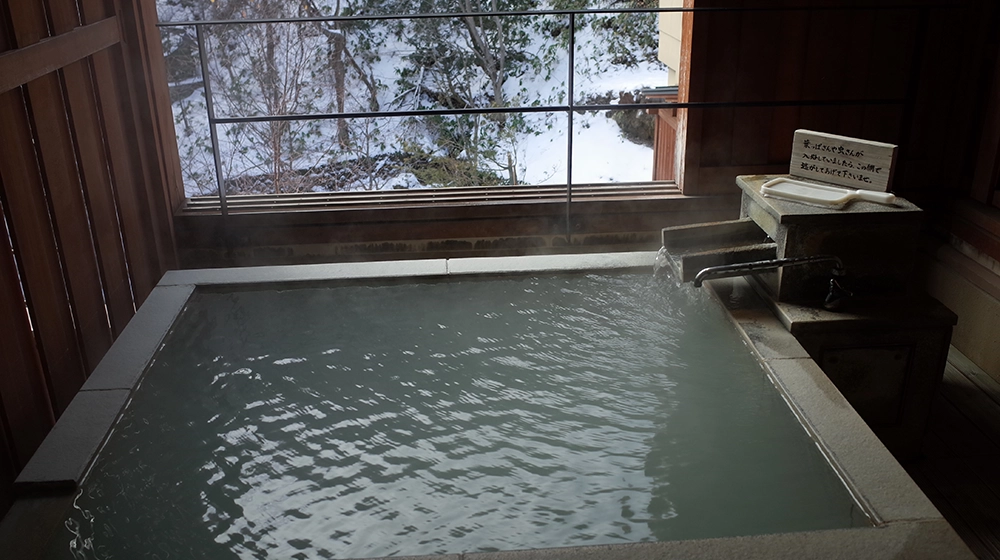
<Sulfur springs (hydrogen sulfide type)>
It is characterized by a peculiar smell like a milky white and boiled egg. Since it has the function of dilating capillaries and coronary arteries, it can be expected to be effective against chronic bronchitis and arteriosclerosis. It also has a detoxifying effect, so it is said to be effective for chronic skin diseases.
< Acidic springs>
It is colorless and transparent or slightly yellowish-brown, has a strong acidity and odor, and is a little irritating to the skin.
It has strong bactericidal power and is expected to be effective against chronic skin diseases and eczema. It is a spring quality that is also called "hot water for skin diseases" and "hot water for sterilization".
<Iron-containing springs>
When it springs up, it is colorless and transparent, but when it comes into contact with air, the iron oxidizes, and it becomes a characteristic brownish brown color in the bathtub. Therefore, it is sometimes called "red hot water". It contains a lot of iron and may have a metallic taste or metallic smell.
Because it warms well, it can be expected to be effective for rheumatism, menopause, anemia, chronic eczema, etc. In addition, since it has a strong bactericidal effect, it is suitable for improving trauma and dermatitis.
It is said to be effective for menstrual disorders and is sometimes called "child's treasure hot spring".
<Sulfate springs (nitrate)>
It is colorless, transparent, and odorless, but it has a slightly salty taste due to its high sodium content.
It is said to have a sedative effect that lowers blood pressure and relieves pain. Therefore, it can be expected to be effective for hypertension, arteriosclerosis symptoms, trauma, etc., and constipation, obesity, diabetes, gout, etc. because it actively motilizes the intestines.
<Salt springs (chloride springs)>
It is a colorless and transparent hot spring with a salty taste.
The salt prevents sweat from evaporating on the skin, so it is warm forever, and because it has a high heat retention effect, it is difficult to cool down and is also called "hot water". It is expected to be effective for neuralgia, back pain, and sensitivity to cold.
<Baking soda spring>
It is a colorless and transparent hot spring. Because it contains baking soda, it softens the surface of the skin through the emulsification phenomenon, washes away fat and secretions, and makes the skin smooth and smooth after bathing. It is also called "beauty bath" because the skin is smooth as if it were washed with soap.
Also, just by washing your hair and rinsing it with hot water, you can get a shiny and smooth finish. It is said to be effective for cuts, burns, and chronic skin diseases.
-<Radium springs>
It is a hot spring that contains more than a certain amount of radon and tron elements. Radon and tron are substances with a strong ionizing (bioactive) effect, which act on blood and cells to promote metabolism, and are said to be effective against diseases such as neuralgia. In particular, since it has a sedative effect, it can be expected to be effective against rheumatism and menopause.
It has been popular for a long time as a hot spring that is effective against all diseases.
<Alum springs (including aluminum springs)>
It is colorless and transparent, or has a slightly yellowish-brown color. It has the effect of tightening the skin and mucous membranes, and is said to be effective for chronic skin diseases, inflammation of the mucous membranes, athlete's foot, and urticaria.
It has also been said for a long time that it is effective against eye diseases, and is called "eye bath".
-Green springs (including aluminum springs)
It is dominated by iron sulfate and is strongly acidic. It contains minerals such as copper and manganese, as well as iron. When exposed to air, it oxidizes and turns brownish-brown.
It warms well and is said to have a high hematopoietic effect, and can be expected to be especially effective for anemia and chronic eczema.
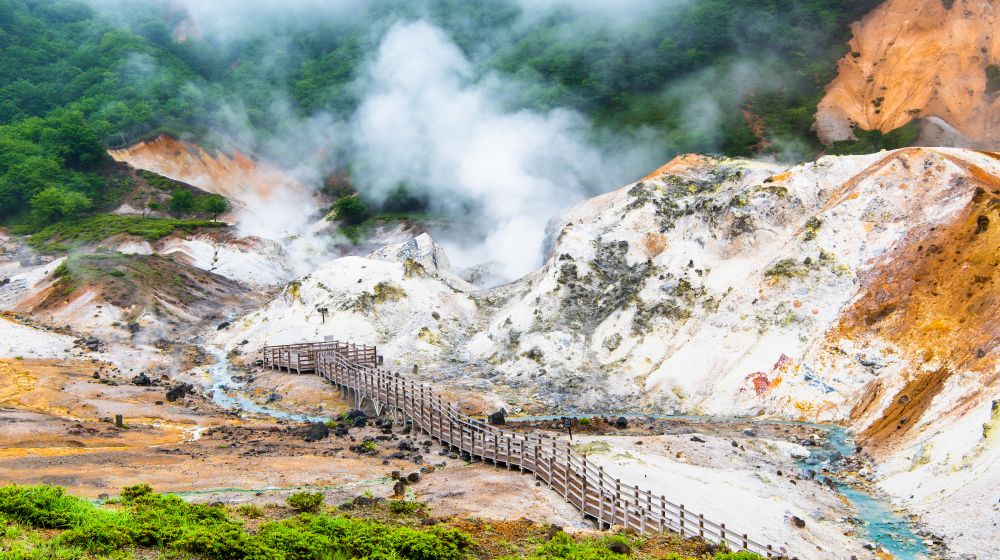
The history of Noboribetsu Onsen overlaps with the history of Hokkaido.
It is said that the history of hot springs began in the late Edo period when Okada Hanbei, who was mining sulfur in Jigokudani, built a communal bathhouse. However, it is recorded that Takeshiro Matsuura, who is also famous as the godfather of Hokkaido, who visited Hokkaido to investigate the natural hot springs that gushed out before that, also stopped by.
The name Noboribetsu comes from the name of a stream in the Ainu language called Nupulpe in this area, which means "a river with white turbidity or a dark-colored river (also known as a river with spiritual power").
In addition, the meaning of the Kusuri Sanbetsu River, a tributary of the Noboribetsu River, where Noboribetsu hot spring town is located, is also "the river of medicinal baths", suggesting that the Ainu people also used this source as a special place.
People began to gather at the communal bathhouse, and after that, Mr. Kinzo Takimoto, who was a carpenter, improved roads and accommodations at his own expense so that this area could be used as a bathhouse, and more people began to gather in the bathhouse.
Since it was designated as a recreation area for wounded and sick soldiers in the Russo-Japanese War at the end of the Meiji era, Noboribetsu Onsen's popularity became known throughout Japan, and the prototype of the modern appearance lined with souvenir shops and inns was formed and transformed into a Onsen town.
Later, with the opening of the train, the number of visitors increased even more, and it developed into one of the leading hot spring resorts in Japan to the present day.
Nowadays, it is attracting even more attention as a major hot spring tourist destination due to facilities where you can enjoy various leisure activities centered on the hot spring town and access to natural parks.
